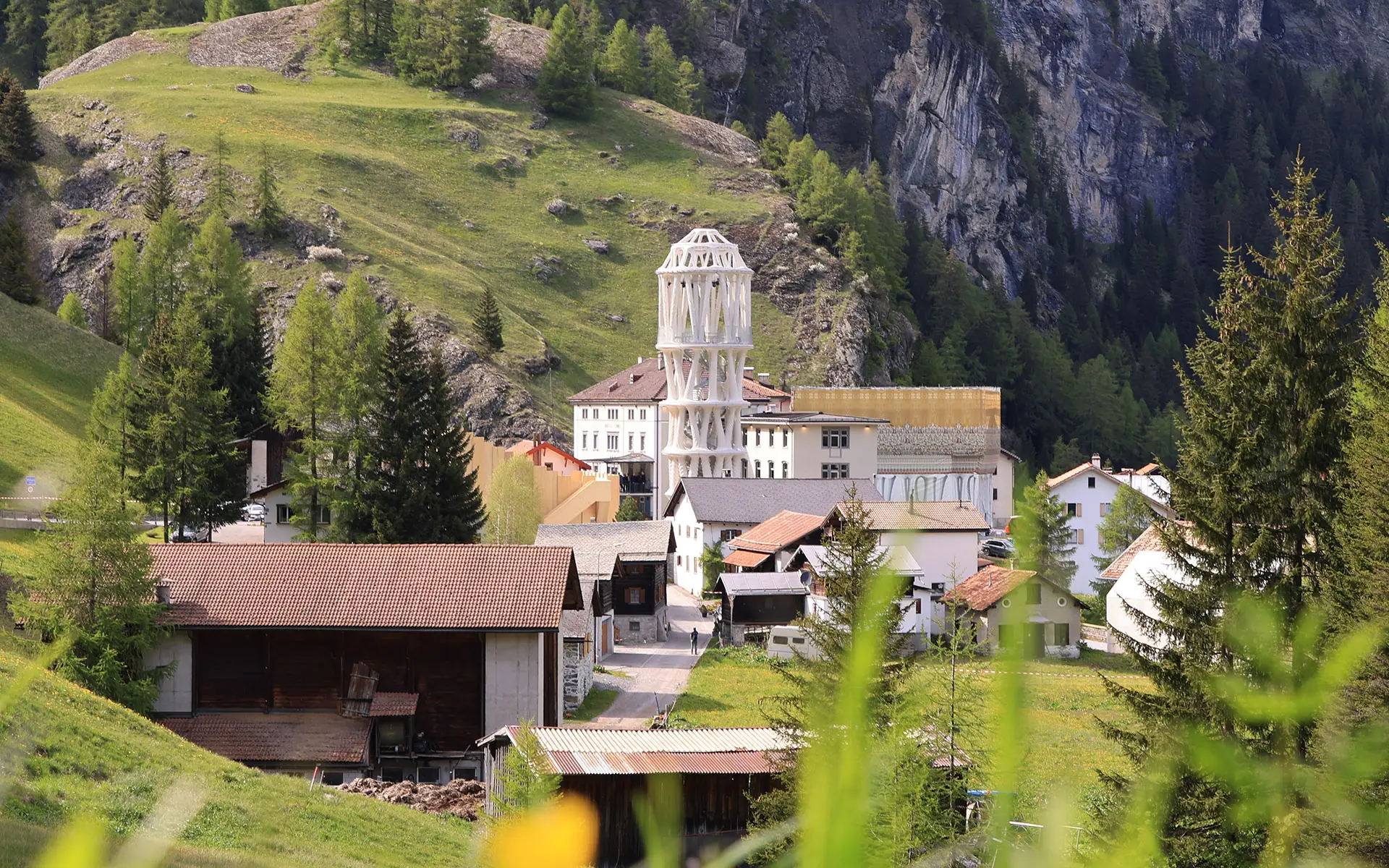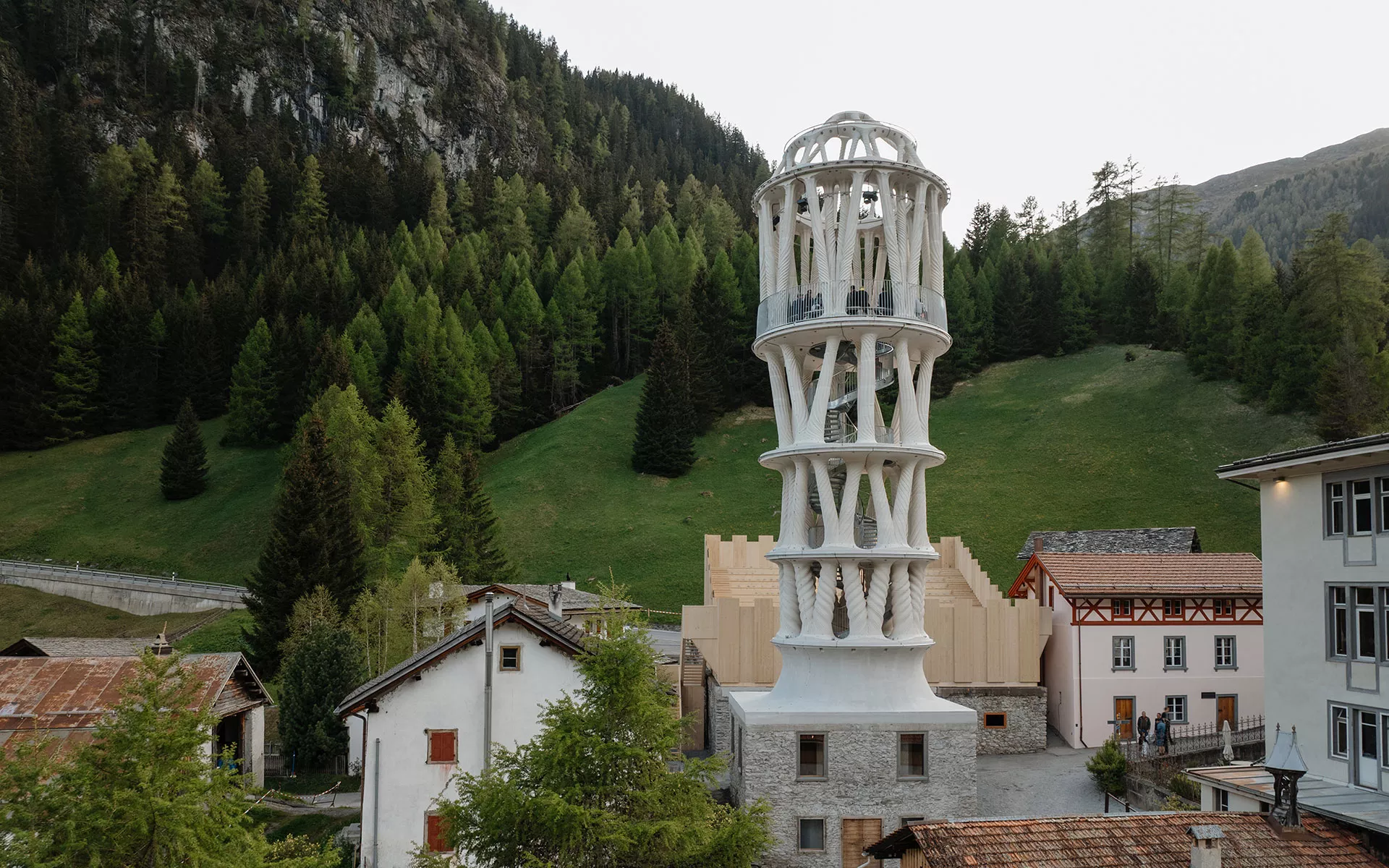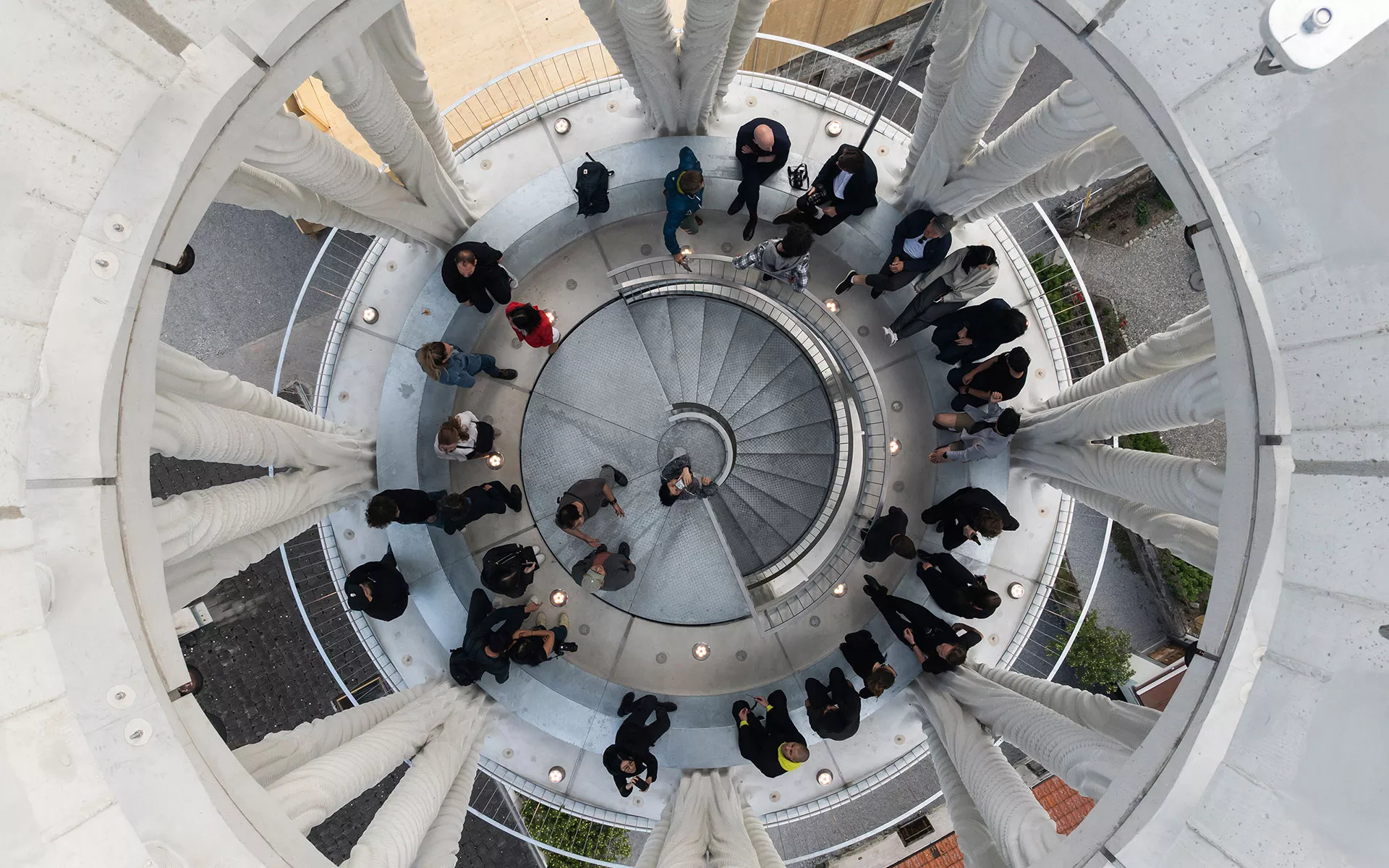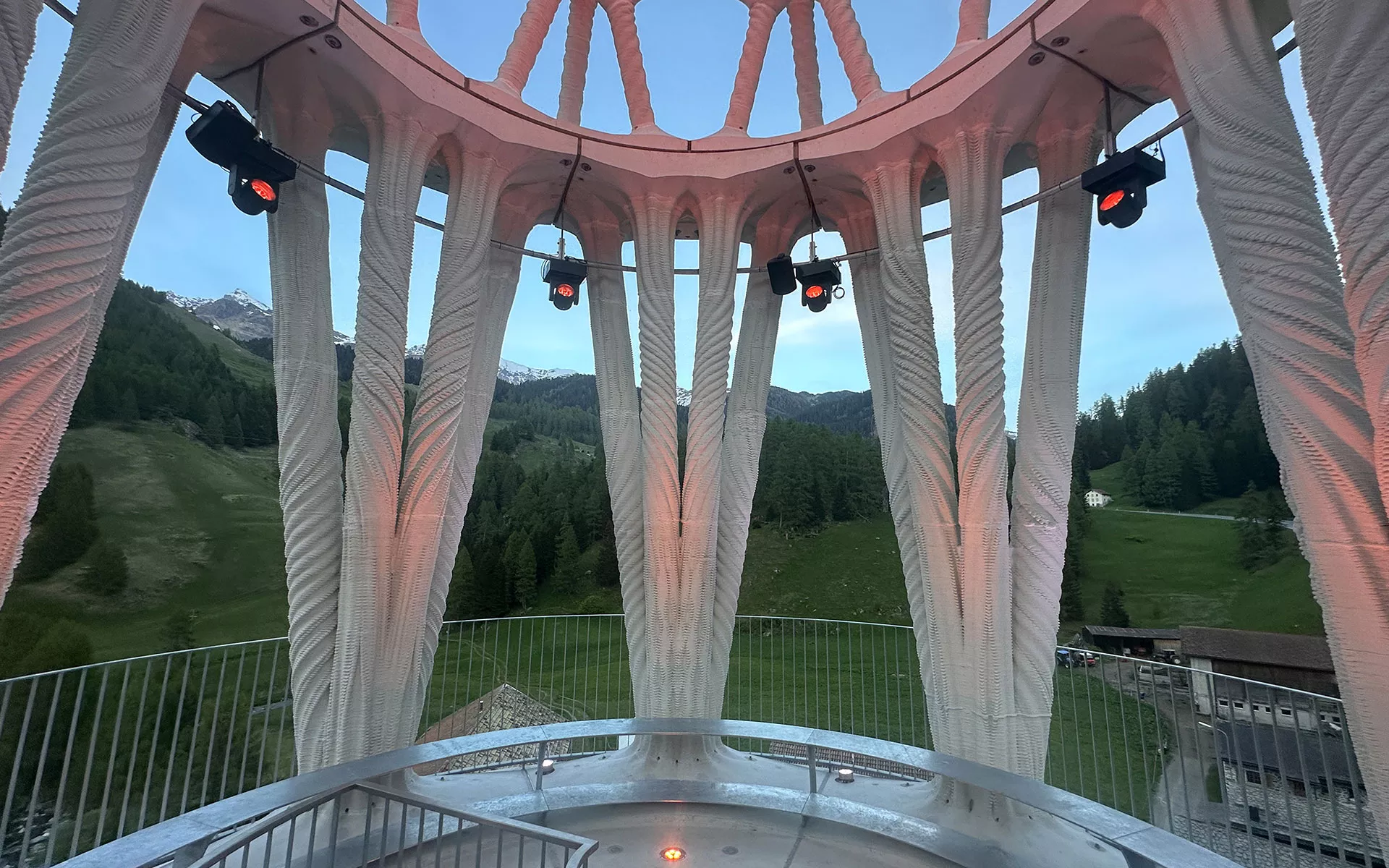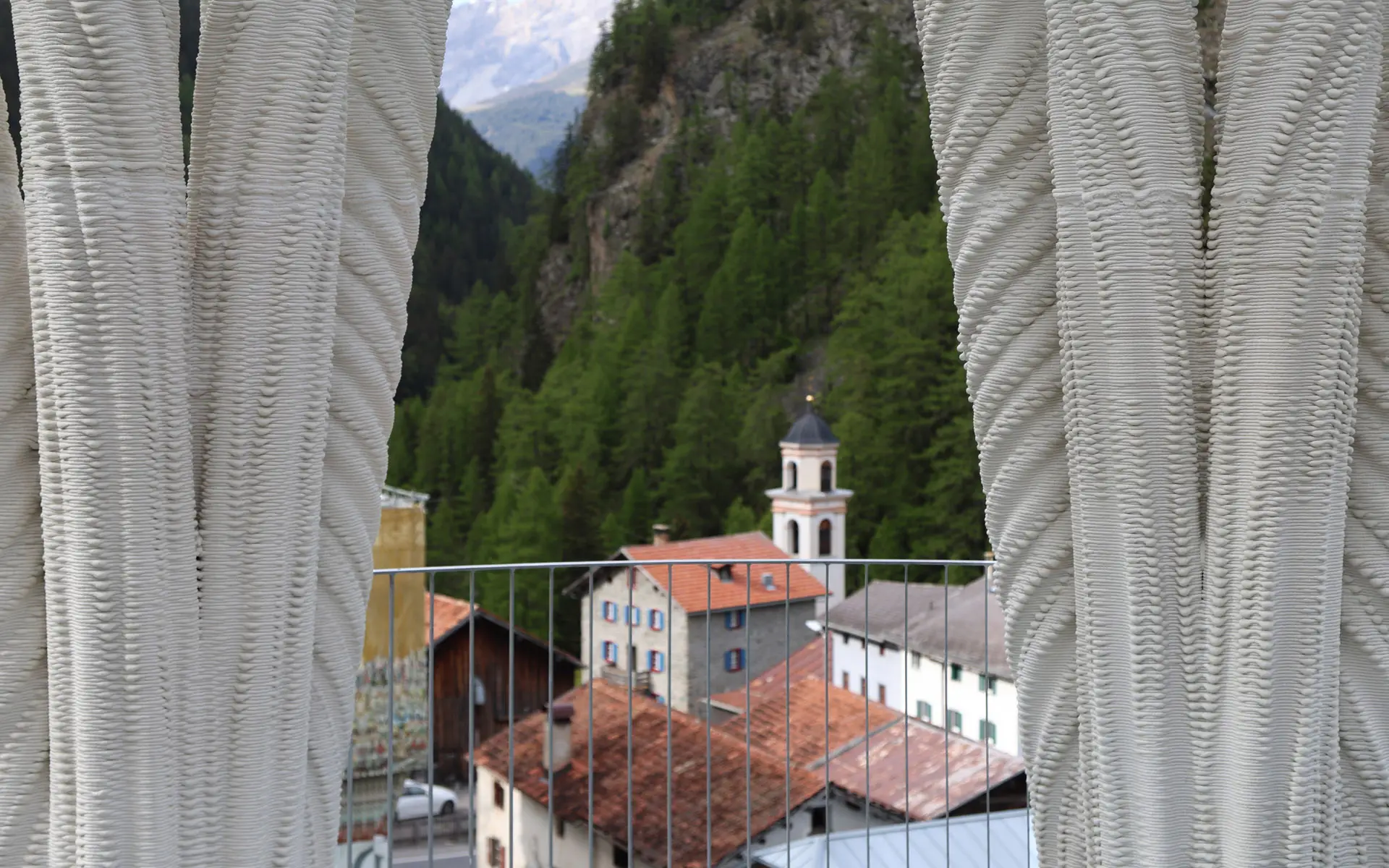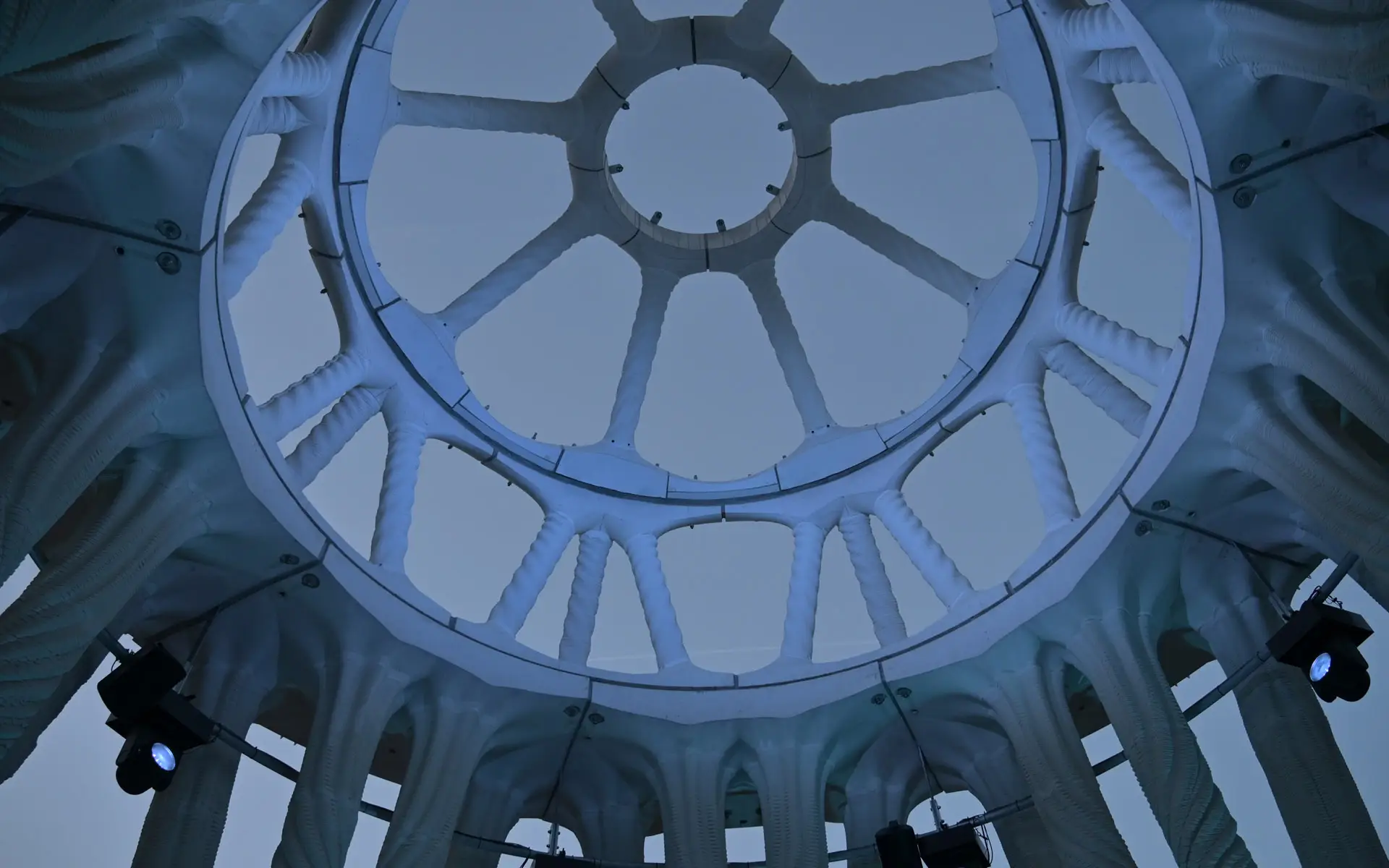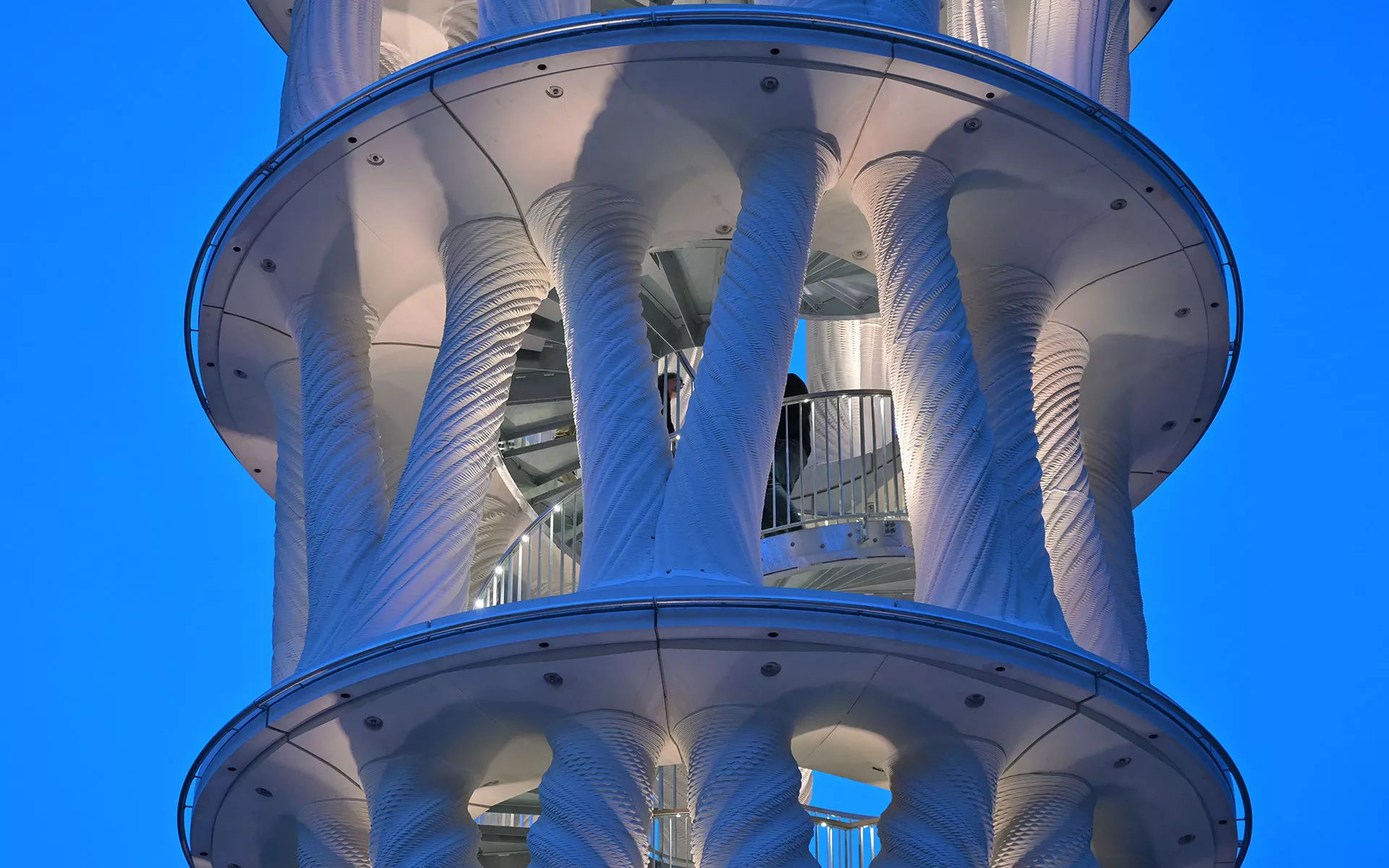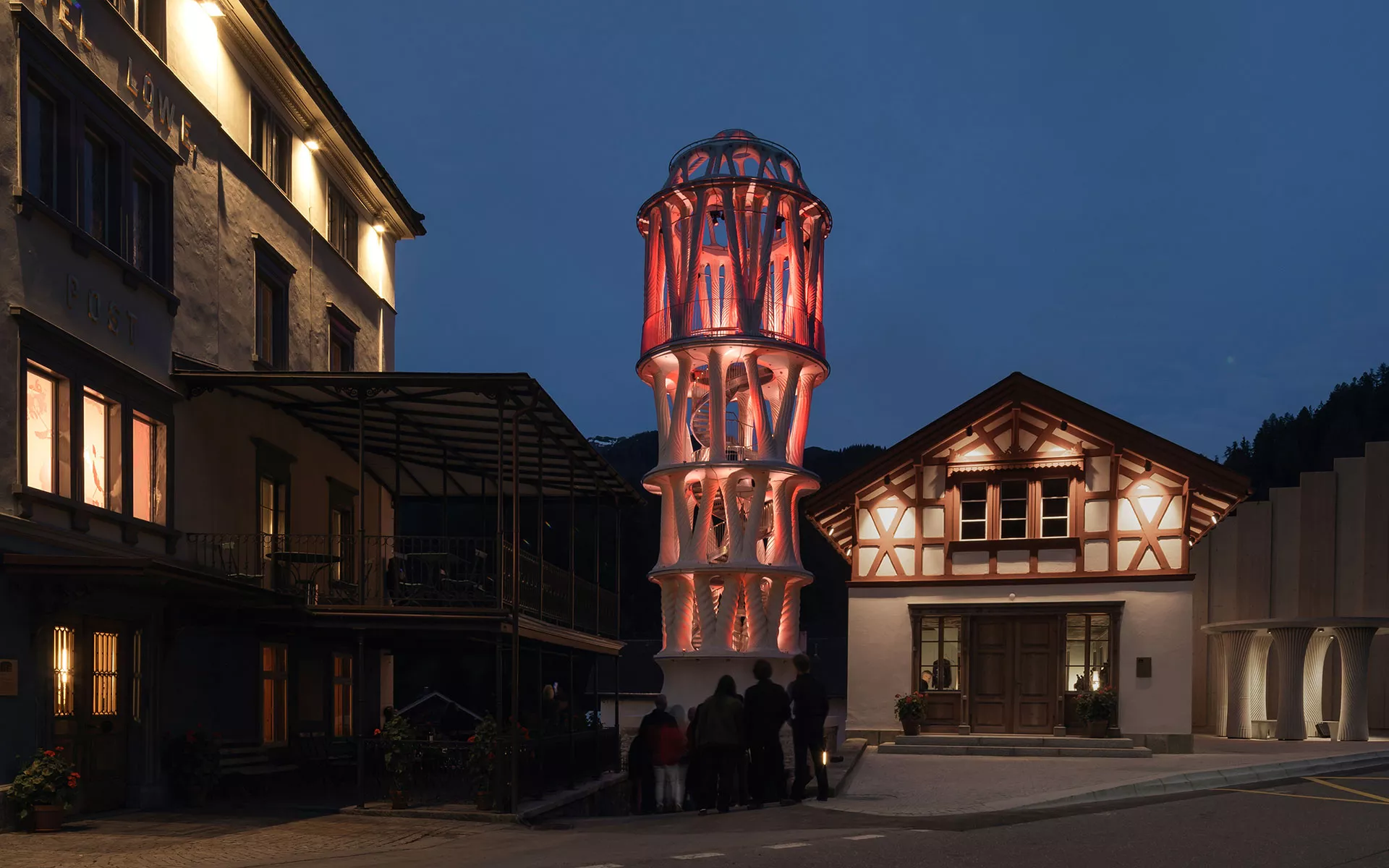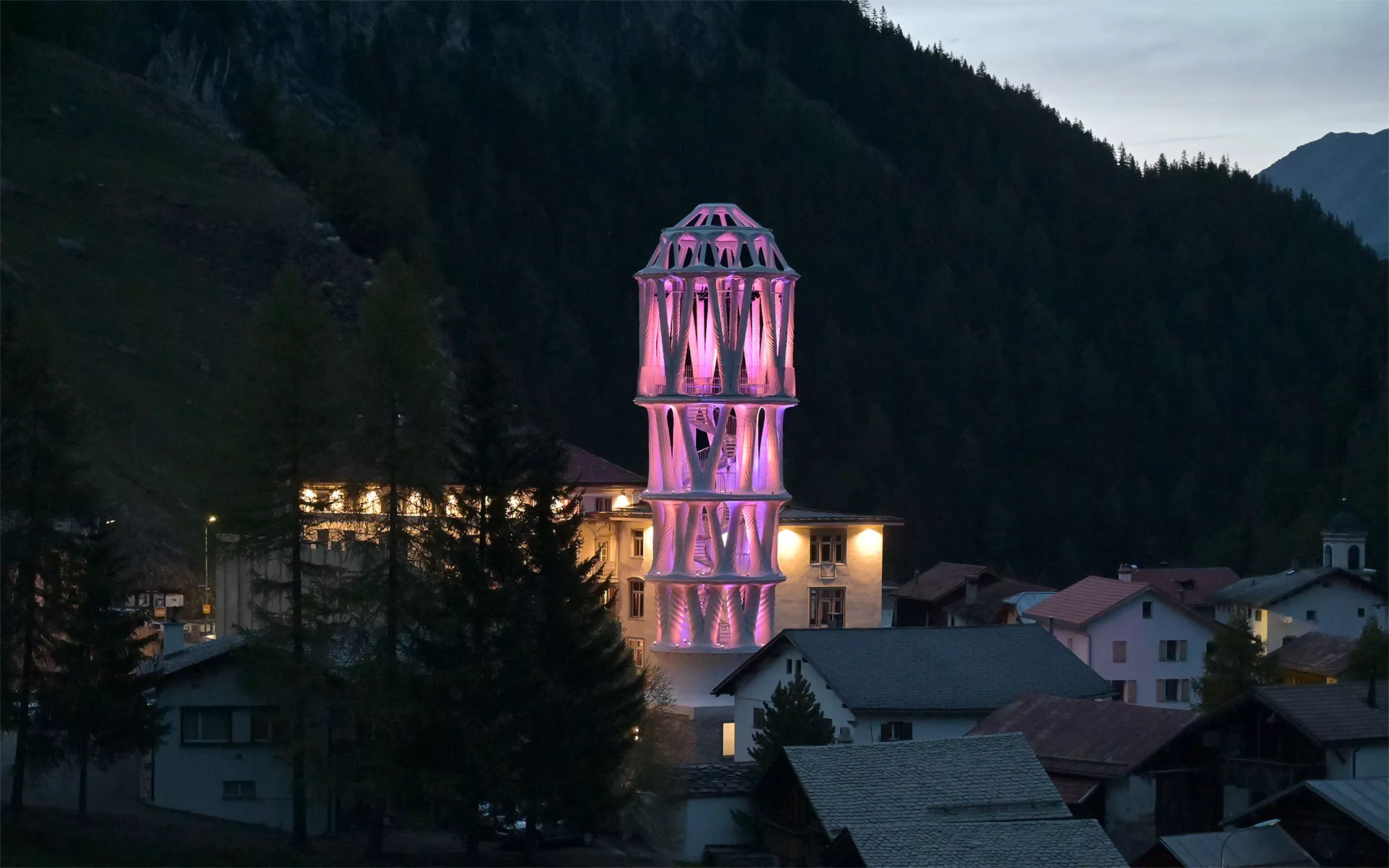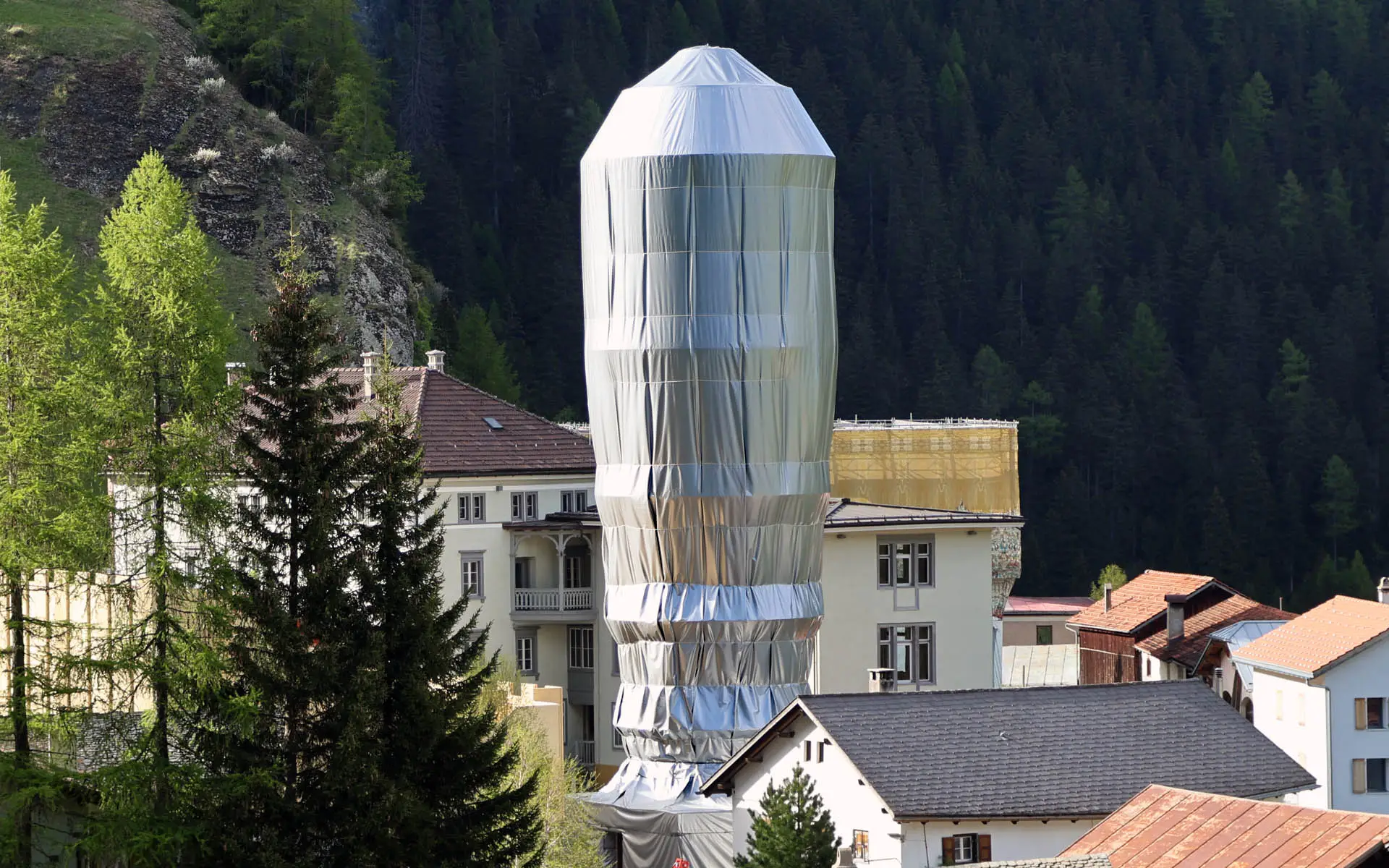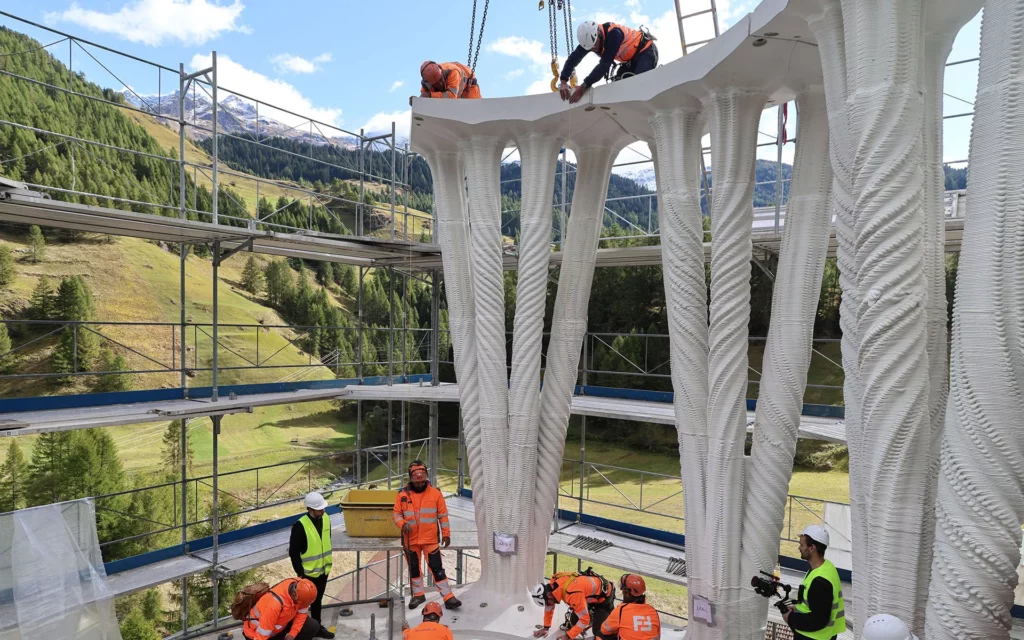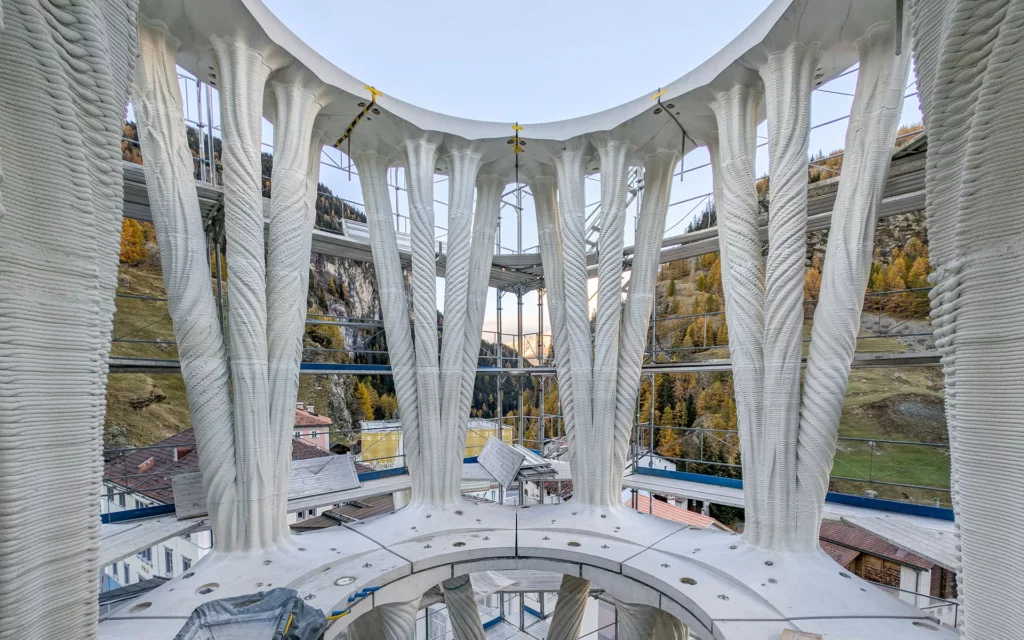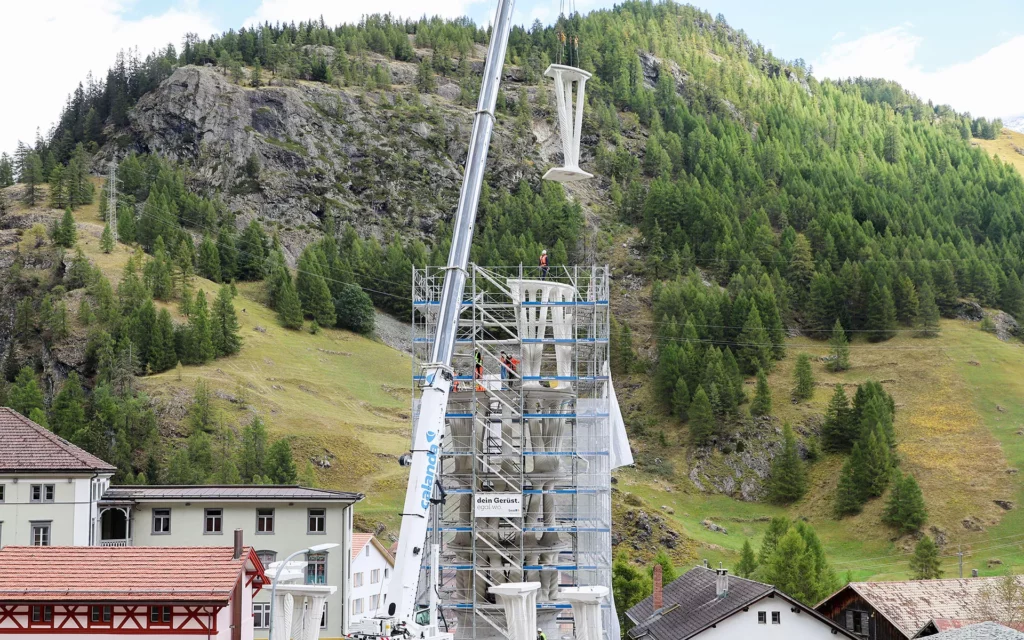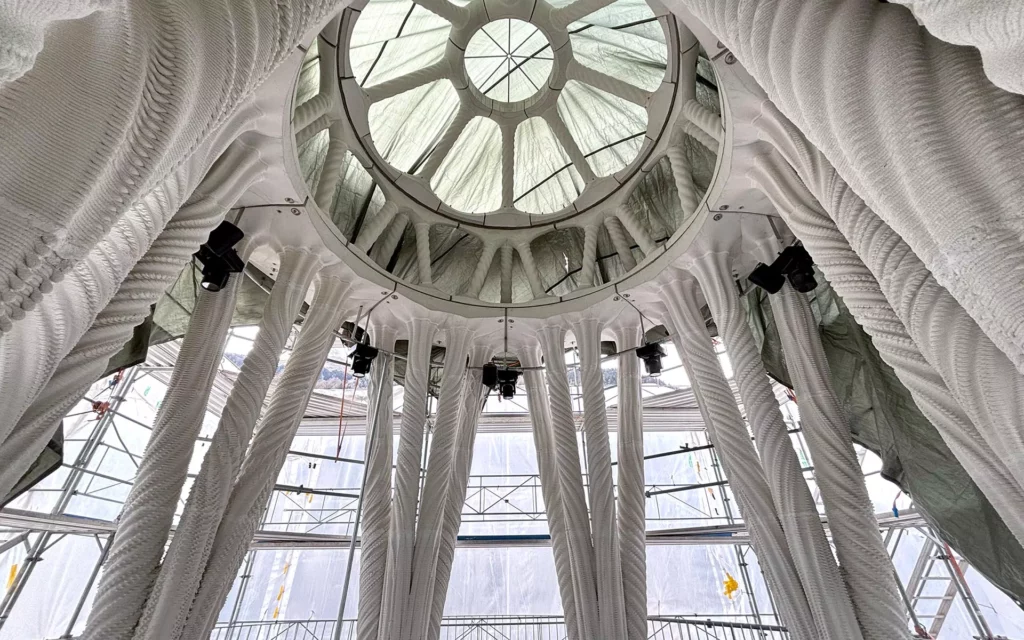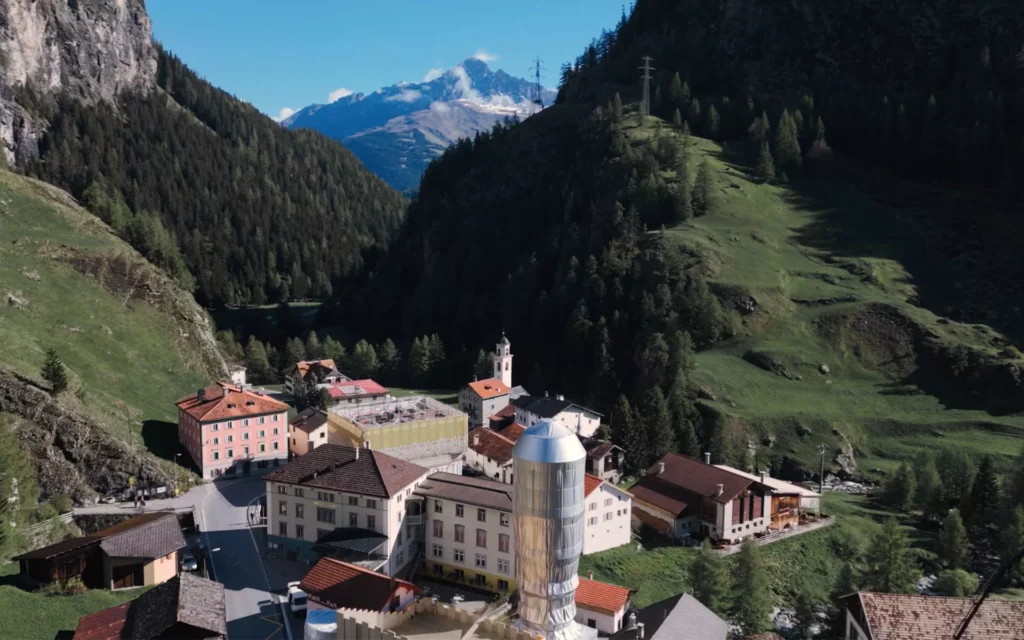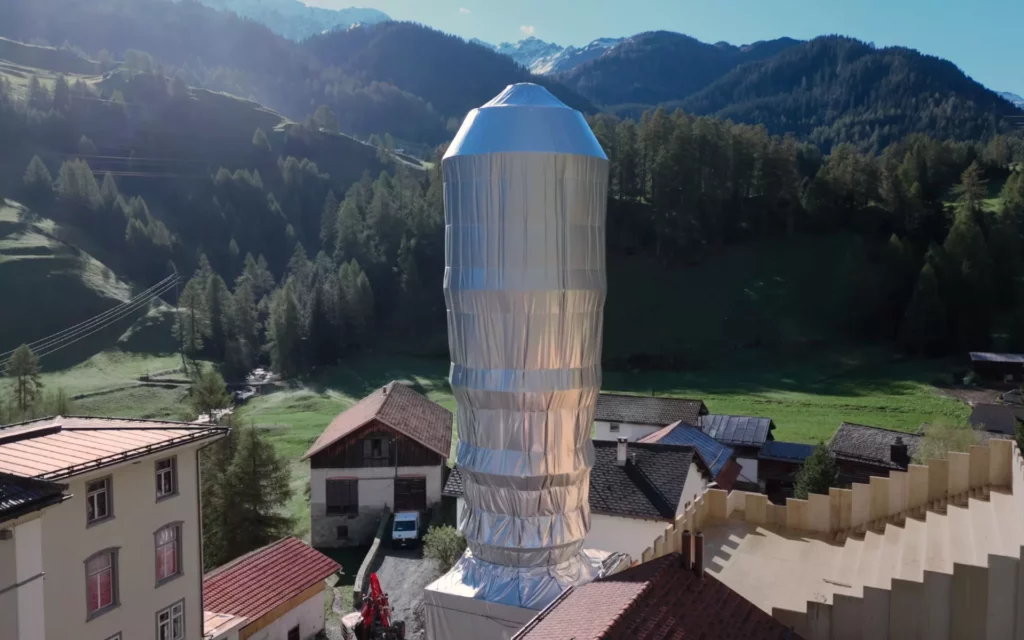Tor Alva («The White Tower») is the world’s tallest 3D-printed building in the alpine village of Mulegns, Switzerland. Led by the Origen Cultural Foundation in collaboration with ETH Zurich, the tower reimagines Mulegns’ cultural legacy through architecture. Designed as an immersive performance space, the White Tower features a cupola theater enveloped by a forest of filigree branching columns – a breathtaking venue above the village rooftops.
The project serves a dual purpose: to create a one-of-a-kind performance space that merges architecture, culture, and science, while also revitalizing a village confronting structural challenges. Additionally, it showcases the interdisciplinary research from ETH Zurich, advancing digital building practices that foster innovative, rich, and sustainable environments.
Symbiosis of Art and Research
The tower pioneers using material-efficient 3D-printed structural concrete, enabling a distinctive architectural form, characterized by 32 unique 3D-printed columns. Each column is articulated with a bold array of forms and intricate ornamentation at multiple scales, giving the structure an enigmatic, otherworldly presence. It evokes the craftsmanship of the Baroque master builders of Grisons, forging a bridge between the traditions of the past and the innovations of the future. With its spectacular architecture and ground-breaking technology, the Tor Alva functions as a beacon for the village of Mulegns.
Revitalizing the Village of Mulegns
Nestled along the historic Julier Pass route, once traversed by merchants and muleteers, the alpine village of Mulegns flourished in the 19th century as returning emigrant confectioners built grand villas and hotel pioneers fostered a thriving tourism industry. In 2025, this fading village, which has only twelve residents, is being reimagined through Tor Alva and the Centre for Digital Building Technologies, a collaboration between the Origen Cultural Foundation and ETH Zurich. This visionary project not only revitalizes Mulegns’ rich cultural heritage but also drives sustainable transformation in the building industry through innovative digital construction techniques. By fostering architectural tourism and laying the foundation for renewed prosperity in the high alpine valley, Tor Alva breathes new life into a historic community while setting a global standard for sustainable, culturally vibrant development.
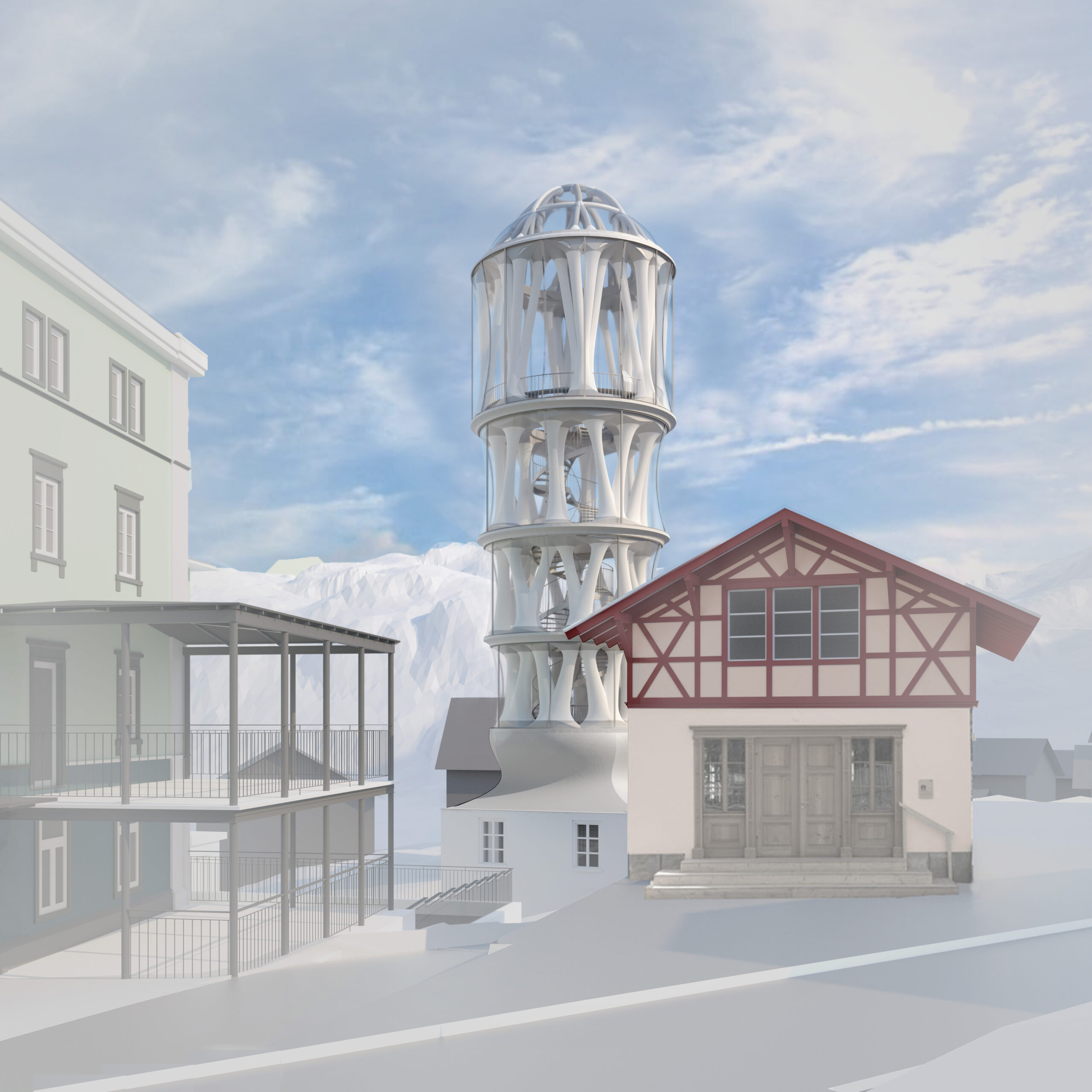
Architecture
With its striking architecture and groundbreaking use of technology, the White Tower exemplifies the transformative potential of computational design and digital fabrication in architecture and construction. The use of 3D printing enables a bold, non-standard approach to architecture, offering an extraordinary range of shapes and forms, while also providing economic and ecological benefits.
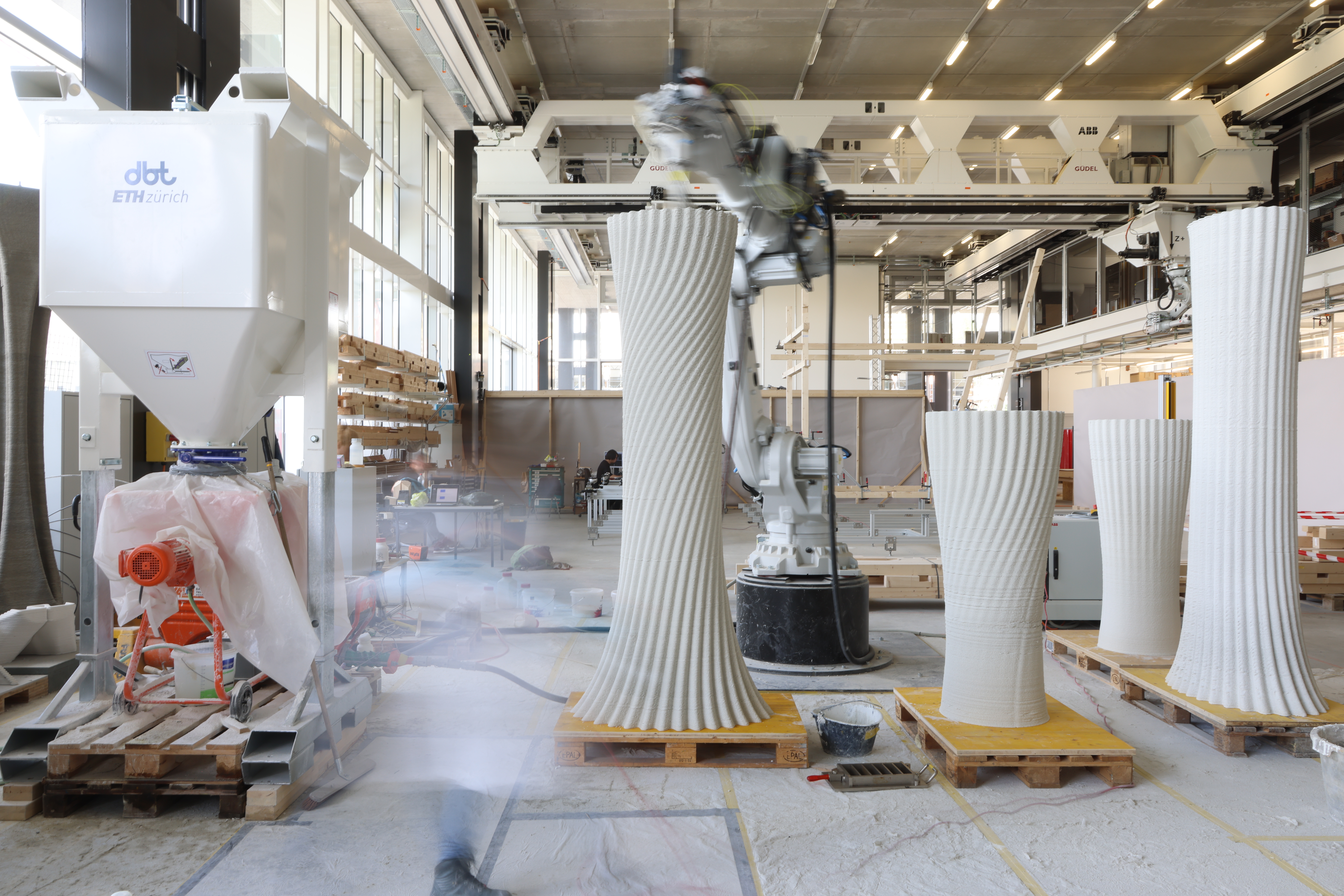
Research and Innovation
The White Tower showcases groundbreaking advancements in computational design, digital fabrication, structural engineering, and material science, all aimed at more sustainable construction. Technical innovations include the structural use of 3D-printed concrete with thin-walled, material-efficient components, as well as modular construction for future reuse. Among the pioneering contributions of Tor Alva are novel structural solutions to reinforce the 3D-printed concrete, one of the main challenges in the field up to now. The innovations in these research fields will fundamentally change construction, paving the way for more sustainable building practices. These pioneering developments in architecture were made possible by intense collaborative and interdisciplinary work with domain experts in architecture, structural engineering, materials science, and robotics, who all contributed with innovations from their respective fields.
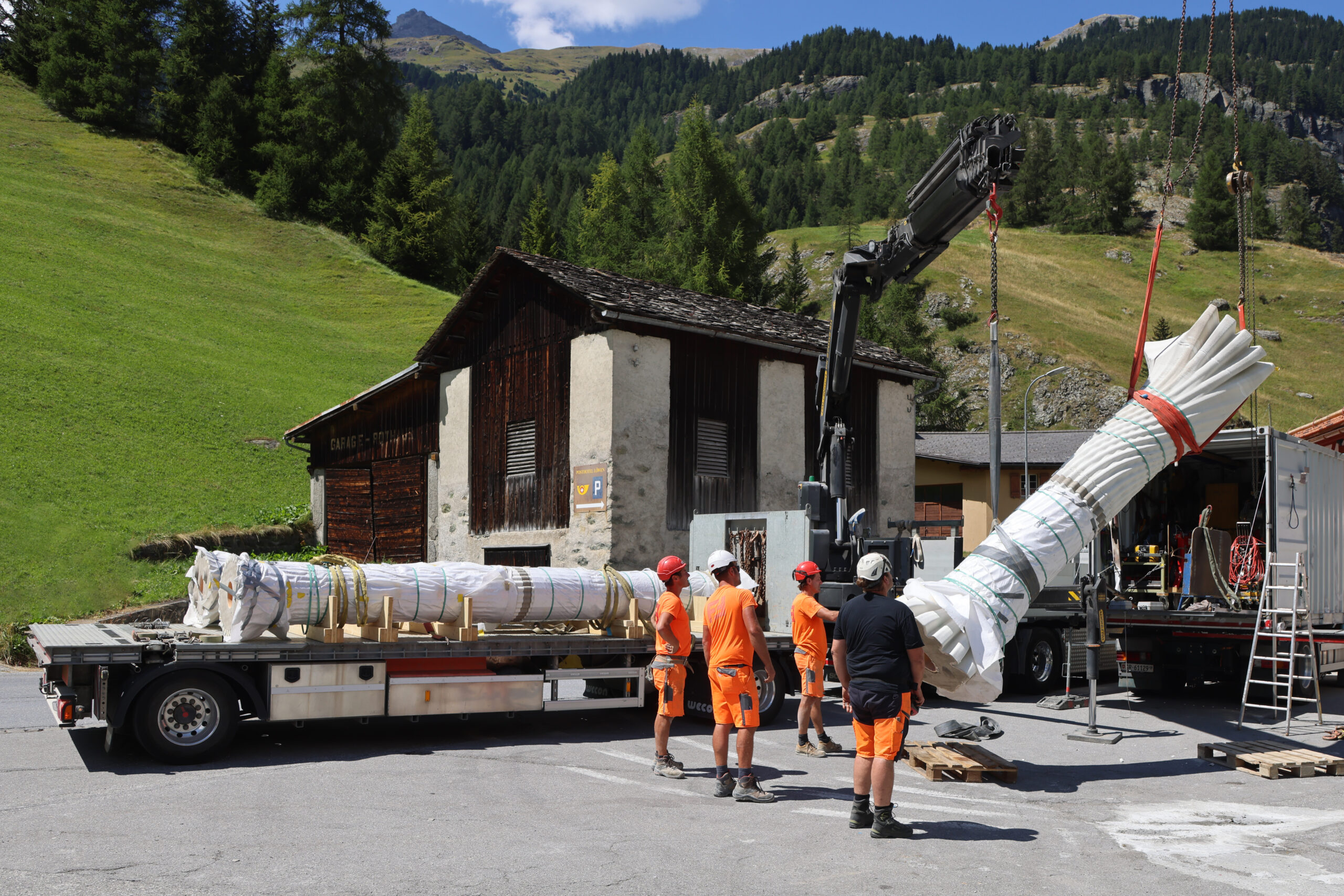
Team
Nova Fundaziun Origen is building the White Tower in close collaboration with ETH Zurich, the construction companies Uffer Group and Zindel United, and the engineering firm Conzett Bronzini Partner AG. The architects of the White Tower are Prof Dr Benjamin Dillenburger and Michael Hansmeyer from the Digital Building Technologies research group at ETH Zurich. The ETH professorships of Robert Flatt (building materials) and Walter Kaufmann (structural engineering), together with other researchers from the National Centre of Competence in Research (NCCR) Digital Fabrication, have made significant contributions to the development. The construction of the White Tower is an architectural, engineering, and financial challenge. The Tower could only be realised thanks to the courageous commitment of generous foundations, companies, and private individuals.
Facts & Figures Tor Alva
Structure
- Four levels, each consisting of eight reinforced 3D-printed concrete columns.
- Double dome consisting of 32 branching columns.
- The columns are fully structural, using 3D-printed concrete as a load-bearing material.
- 124 3D-printed elements in total
Dimensions
- Height: 30.0m including an existing base
- Diameter: 7.0m to 9.0m
Cupola Theatre
- Capacity: 32 visitors
- Total height: 8.0m, covered by dome
3D Print
- 2500 extruded concrete layers total
- 10 mm layer height, 15-20mm width
- Estimated print time: 900 hours
Facade
- Removable lightweight membrane
Construction
- Opening May 2025
- Mulegns, Switzerland; on the Julier Pass

